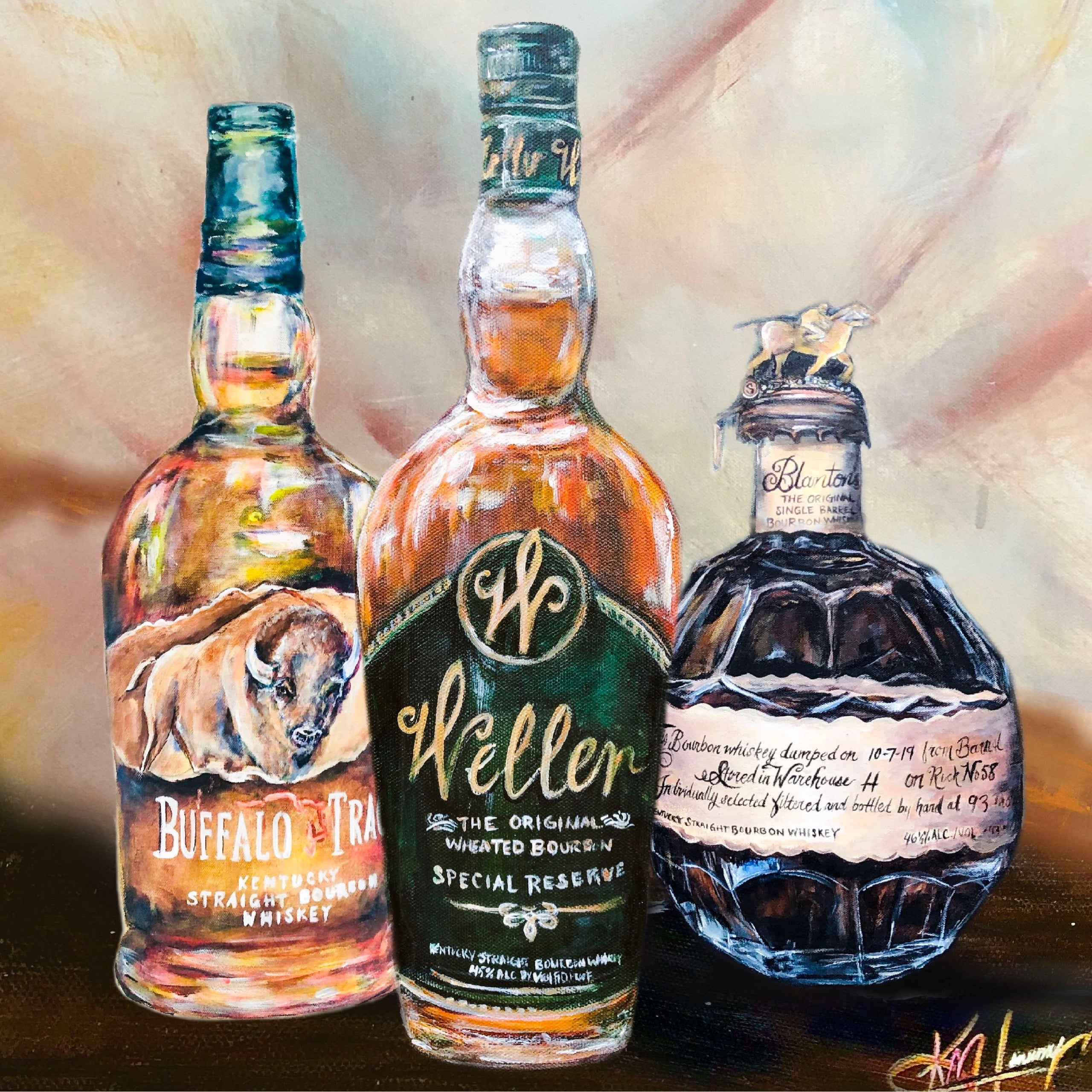The Relevance of Whiskey Art in Celebrating Heritage and Workmanship in the Beverage Sector
The detailed connection in between whiskey art and the celebration of heritage and workmanship within the beverage market can not be overstated. With attentively made tags and bottles, bourbon brand names envelop their historic roots and the artisanal abilities that define their production methods.
The Historic Roots of Whiskey
At the heart of bourbon's allure lies a rich tapestry of historical origins that trace back to old civilizations. The beginnings of bourbon can be connected to the distillation techniques of the Sumerians and Babylonians around 2000 BCE, where early types of fermented grain beverages started to emerge. It was in the Center Ages that the art of distillation progressed substantially, specifically in Ireland and Scotland, leading to the creation of scotch as we recognize it today.
The term "scotch" itself originates from the Gaelic word "uisce beatha," implying "water of life." This expression highlights the social value of bourbon in Celtic societies, where it was commonly related to routines, parties, and communal bonding. By the 15th century, distillation came to be an acknowledged craft within reclusive areas, leading the way for the facility of legal distilleries.
As profession routes increased, whiskey's popularity grew, transcending local limits and catching the rate of interest of aficionados worldwide. Limited Edition. This historic trip reflects not only the workmanship behind bourbon manufacturing yet also its important role in social and social contexts, noting it as a substantial drink throughout background
Artistic Expression in Branding
Bourbon branding stands as a compelling crossway of artistry and commerce, where visual identity plays a vital duty fit consumer perception. The aesthetic appeals of bourbon tags, packaging, and advertising products mirror not only the brand's tale but additionally its core values and heritage. With imaginative expression, distilleries communicate a narrative that reverberates with consumers, evoking emotions and triggering links.
The usage of color, typography, and images in branding serves to separate items in a saturated market. Conventional themes might evoke a feeling of credibility and craftsmanship, while modern-day layouts can signify advancement and forward-thinking. This critical imaginative direction enhances brand recognition and commitment, enabling customers to create a personal connection with the scotch they choose.
In addition, creative expression in branding typically works as an event of local heritage. Distilleries often incorporate neighborhood symbols or historic recommendations into their designs, producing a sense of place that invites consumers to partake in a broader cultural experience. Eventually, the artistry behind whiskey branding not just boosts visual allure but likewise improves the general story of the brand, cultivating a much deeper recognition for the workmanship and heritage embedded in each container.
Workmanship in Bottle Style
The virtuosity apparent in bourbon branding expands past visual identification to encompass the craftsmanship included in bottle design. Each container acts as a vessel not simply for the spirit within, however also for the story it outlines its top quality, tradition, and beginning. The layout procedure requires precise interest to detail, as elements such as form, closure, and material contribute dramatically to the total perception of the scotch.
Craftsmanship in bottle style includes selecting top quality glass that can enhance the scotch's shade and quality, while also offering a tactile experience for the customer. The shape of the container need to be both aesthetically appealing and functional, usually showing the heritage of the brand. Many distilleries select unique shapes or embossed logos that evoke a feeling of credibility and history.
Furthermore, the label design and typography play an essential duty in interacting the brand's story. Bourbon Art. A well-crafted container not just captivates the consumer's eye but also reinforces the brand name's commitment to quality and tradition. By doing this, the craftsmanship of container layout becomes a crucial facet of the whiskey experience, merging virtuosity with a profound respect for heritage
Social Value of Whiskey Art
Commemorating tradition and craftsmanship, the social relevance of whiskey art transcends mere visual appeals, linking with the historical and social stories of the areas from which it originates. Each container acts as a canvas, portraying the unique stories, mythology, and practices that have formed regional whiskey-making techniques. The intricate styles frequently reflect the heritage of the distillers, incorporating symbols and concepts that reverberate with the society and worths of their areas.

In enhancement, scotch art plays a crucial duty in communal celebrations and events, working as a tangible web link between individuals and their shared experiences. By valuing the virtuosity in scotch product packaging, customers cultivate a deeper understanding and respect for the craft, inevitably enhancing their enjoyment of the beverage itself.
Modern Trends in Bourbon Discussion
Over the last few years, the discussion of scotch has actually advanced to show modern tastes and patterns while my latest blog post still honoring conventional workmanship - Realism Art. Distilleries are progressively concentrating on aesthetic elements that boost the overall drinking experience, bridging the void in between heritage and modernity
Innovative bottle layouts have actually emerged, frequently including lasting products and imaginative labels that tell engaging stories. Numerous brands currently work together with regional musicians, infusing their items with distinct aesthetic expressions that resonate with customers. Additionally, limited-edition launches are typically packaged in collectible containers, adding value and charm for lovers.

Final Thought
In verdict, scotch art serves as an important channel for sharing the heritage and workmanship intrinsic in the drink industry. Via detailed branding, cutting-edge bottle designs, and culturally significant artistic aspects, bourbon brand names efficiently recognize their traditions and attach with consumers.


Workmanship in container design entails picking high-quality glass that can boost the bourbon's shade and clearness, while likewise supplying a tactile experience for the customer. In this way, the workmanship of container layout becomes an essential element of the scotch experience, combining virtuosity with a profound regard for heritage.
In conclusion, whiskey art offers great site as an essential channel for sharing the heritage and craftsmanship integral in the drink sector.